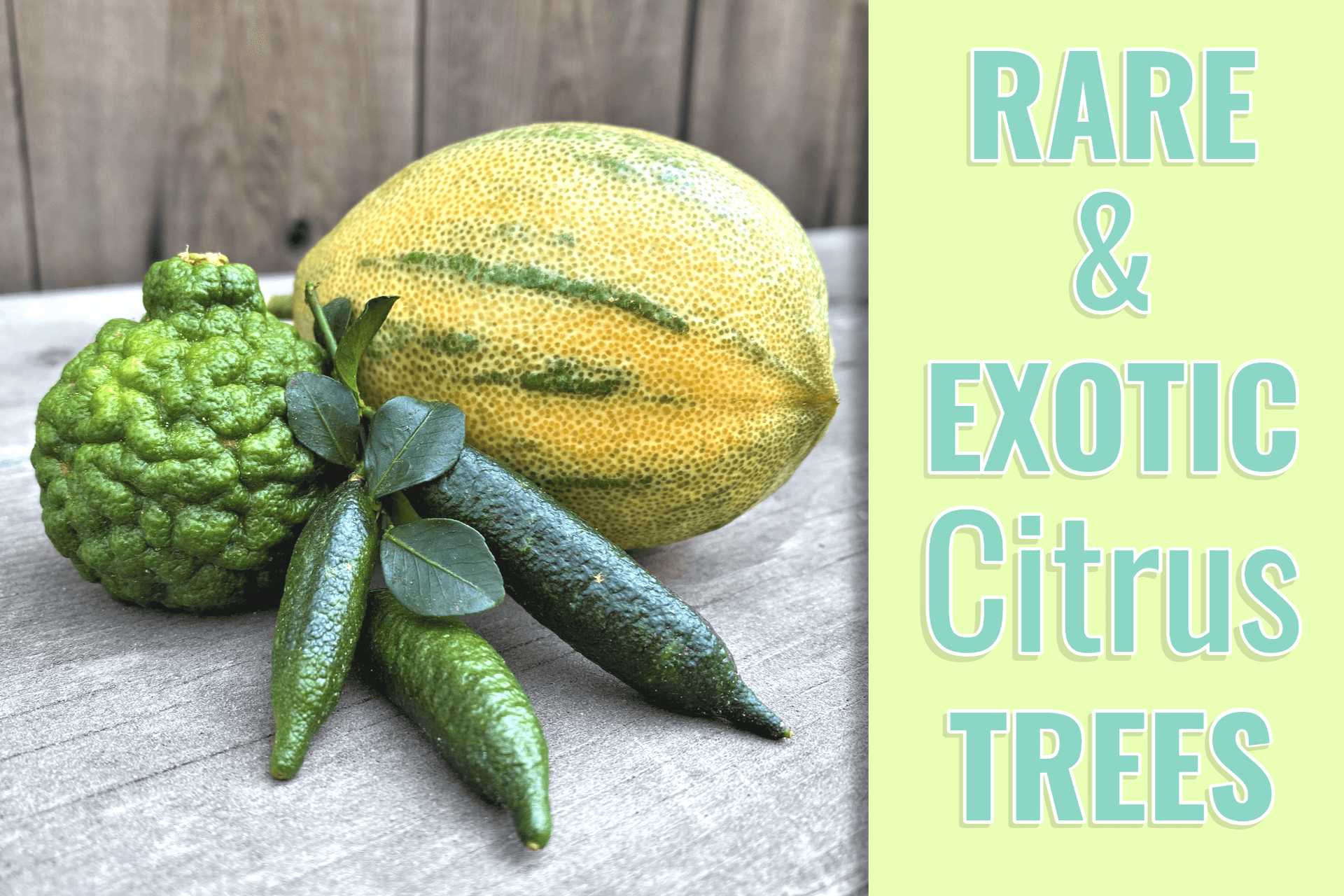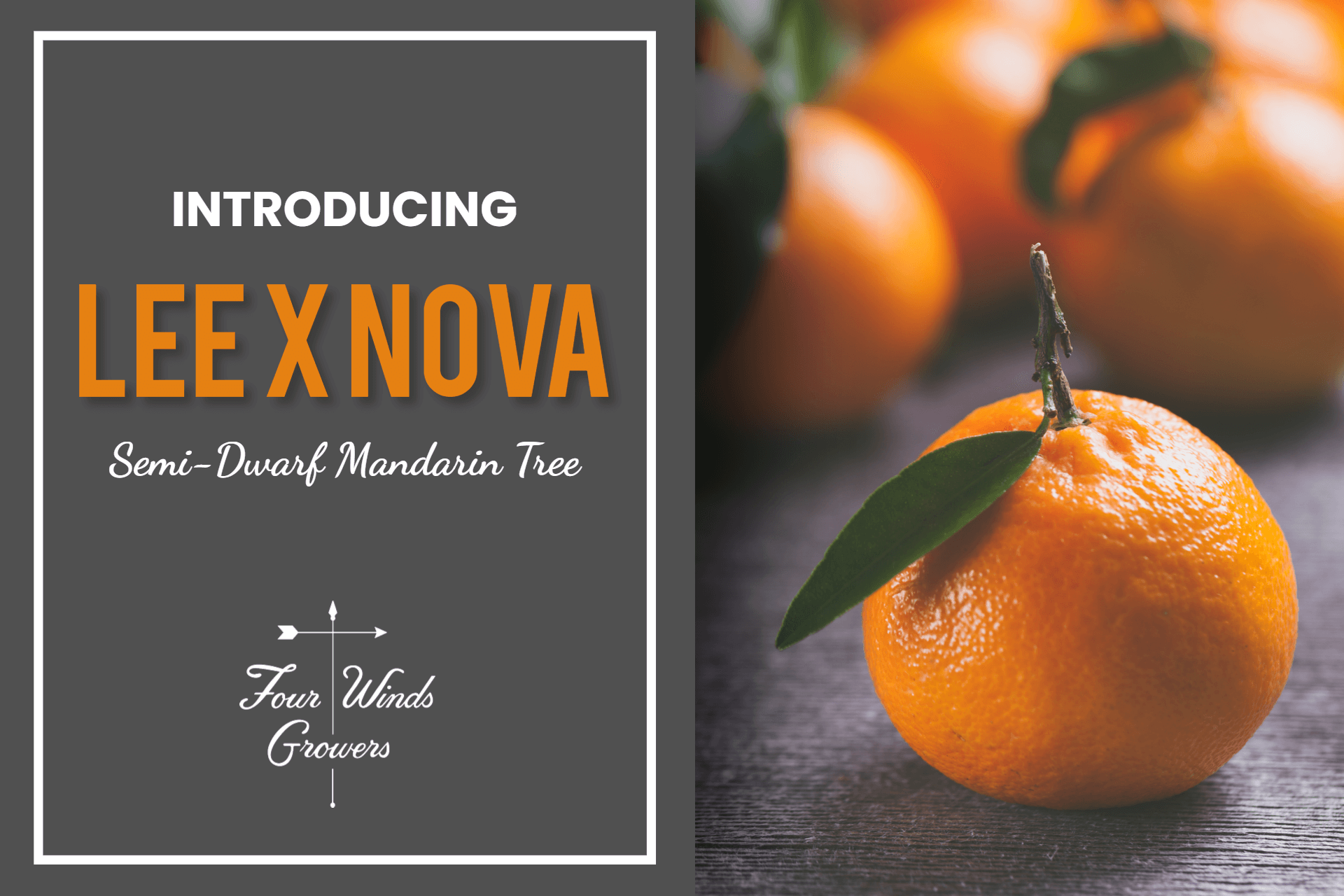The search for rare and exotic fruit trees will drive some of us to extremes, but with online providers of citrus, you can have unique varieties shipped right to your door.
Rare and Exotic Citrus Trees:
Australian Finger lime: Australian Finger limes while rare and exotic here in the US, grow wild in the subtropical coastal region of Australia. Finger limes produce pinky-shaped fruits that are packed with lime juice vesicles that offer a unique limey caviar experience when eaten or used to freshen up your favorite recipes. This exotic variety has uniquely small dime-sized leaves that make for a beautiful ornamental tree or shrub as well.
Buddha's Hand Citron: The wild waving fingers of the buddha's hand have inspired people for generations. This unique cultivar is said to bring good fortune into the home. This likely originated from the practice of using these exquisitely aromatic fruits to freshen up your home. These zesty fruits can be deliciously candied in deserts or used to flavor your favorite beverages.
Variegated Pink Eureka Lemon: Beginning as a sport of Eureka lemon, this spectacularly variegated specimen is sure to impress. Disguised within the multicolored leaves, you'll find equally variegated lemons with a subtle green striped rind that wraps around an almost salmon pink flesh. This unique varietal is also famed for its intense aromatic quality that starts with the blossoms and extends into the fruit as it ripens.
Bouquet de Fleurs Sour Orange: Imagine walking through a citrus grove at peak bloom with the sweet aroma surrounding you. This is the sensation brought by the entrancing fragrance of this unique variety. Not only is this variety's floral aroma intoxicating but the charming ruffled leaves make for a very pleasant ornamental hedge or bush.
Etrog/Assads Citron: This fragrant lemon-like fruit has been cultivated in the middle east for over two thousand years and plays a crucial role in the Jewish autumn harvest festival, Sukkot. In order for fruit specimens to be valid for the Jewish ritual, the parent tree, along with all other trees in its lineage must have been grown on its own roots and never been grafted. This practice has made it exceedingly difficult to secure a valid tree since almost all citrus trees whether for commercial use or home growers are grafted onto disease-resistant rootstock. We at Four Winds Growers provide two options here:
Etrog Citron: This was originally sourced, cleaned & grafted by the CCPP. These clean source trees are grafted onto semi-dwarf rootstock.
Assads Citron: Assads is another Etrog Citron varietal but this one is propagated as cuttings off a tree grown from seed provided by the USDA that was sourced from 7-year-old Etrog Trees in Morocco.
Makrut(Kaffir) Lime: Makrut Limes are a must-have for Thai cuisine. The fruit is prized for the bright citrus flavor and floral notes of the rind and the leaves. The juice is sour and bitter making it suboptimal for eating. This specialty fruit goes by many names including Thai Lime, Thai Bergamot, Makrut Lime, and Kieffer/Kaffir Lime but this last name should not be used as it is highly offensive.
Variegated Calamondin: Also known as the Calamondin Lime, this exotic lemon-lime replacement grows on a beautiful tree full of green and yellow marbled leaves, making it a beautiful plant in any landscape. The fruit is equally impressive in color as it transitions to ripeness.
Bergamot Orange: This sour orange cultivar ripens into a rich yellow fruit that shines as the light reflects off the oily peel. The pale-yellow flesh is reminiscent of lemon, but the flavor is more tart, and lime-like. Bergamot captivates with its aromatic rind which once pressed leaves you with an essential oil rich in floral flavor and bright citrus tones. This oil is used to enhance perfumes, colognes and as a culinary flavoring for all your favorite citrus-infused recipes. Bergamot may be most known for its place in Earl Gray tea where it adds freshness and citrus undertones.
Yuzu Citron: Yuzu Citrus fruit is rarely eaten, rather it is chosen for its fragrant oily rind and aromatic zest that is tart like a grapefruit, with undertones of mandarin. This wonder-fruit dates back over a thousand years having many purposes from culinary to medicinal and even in hot bathing. Both the rind and juice can be used to in
Sudachi Lime/Sour Mandarin: Sour is an understatement when describing Sudachi lime. The juice from this unique fruit is sharp, acidic & tart but also has a rich peppery taste to it. With a delightful flavor like this, culinary enthusiasts around the world have been using this as an exotic lime replacement. This chance seedling is thought to be a hybrid cross a papeda and mandarin citrus.
Chinotto Sour Orange: Also known as the Myrtle-Leaf orange for its beautiful small leaves. The foliage alone is why people seek this decorative ornamental shrub. The blossoms fill the air with a lovely fresh citrus scent that is both floral and sweet. Chinotto sour oranges themselves are scarcely eaten as they have a very sour & bitter flavor.
Variegated Centennial Kumquat: Take the fine texture, crunch, and sweetness of a Nagami Kumquat and add the striking variegations to it. You end up with a positively unique blend of familiar flavor in beauty with the large leaves that transition from pale yellow to cream, then accented by a multitude of green stripes.
Palestine Sweet Lime: Also known as Indian Sweet Lime, this is a delicious piece of exotic citrus with a tender juicy flesh that is mellow in flavor due to its lack of acidity, but has a very pleasant sweet finish.
Check out our Exotic Citrus Growing Tips for more information!
Get in the know about HLB(Huanglongbing / Citrus Greening Disease) and help save your community's citrus. Only source citrus trees from reputable growers.
Author Israel Osuna




